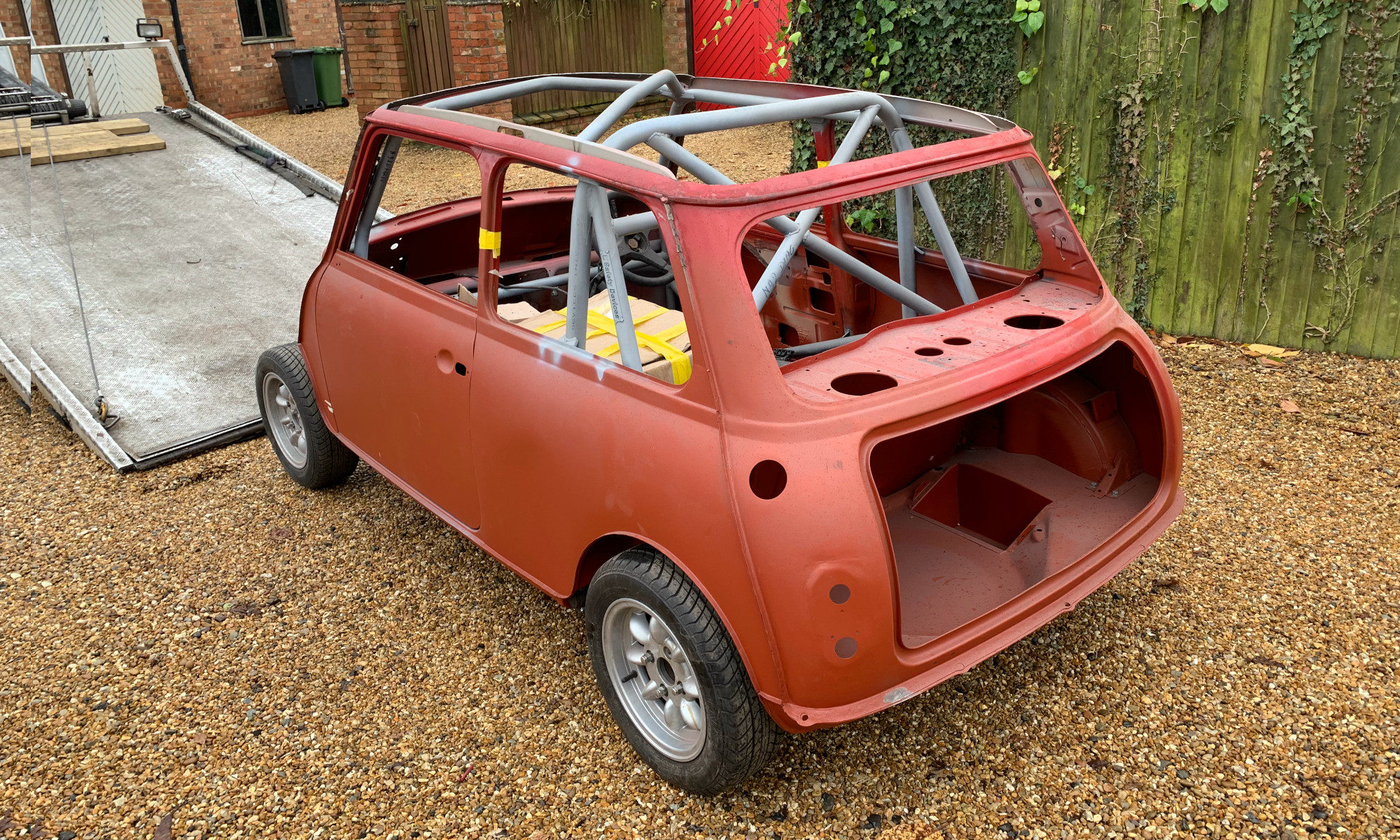I hadn’t been idle whilst I was waiting for PJ to go in for bodywork. I’d been doing a lot of research into how the VETECH conversion would work and also making plans for lots of other areas of PJ’s renovation.
I kept in regular contact with VETECH engineering, during the conversion’s development and in December 2019, I was the first UK customer to test drive their two demo cars at Curborough Sprint Circuit.
VETECH engineering have two demo cars; the red one is a normally aspirated Gen 2 Hyabusa, with just shy of 200bhp. This car has a sequential gear shift via a gear lever. The orange car has the same basic conversion, but has a Gen 1 Hyabusa engine, which is also supercharged and puts out around 300bhp. VETECH have also recently developed a supercharger kit for the Gen 2 engine. The orange car has no gear lever and instead uses a paddle-shift gear change.
Before I went to the test drive, I was pretty convinced that I’d go for the normally aspirated conversion. I didn’t need the power, or the additional expense of the supercharged version. I was however worried that I’d drive both and fall in love with the more powerful supercharged car. I also expected it to be a real handful and not something I’d want to drive on the road.
When I arrived at Curborough, the track was slightly damp and there were a few spots of rain throughout the day. This wasn’t a bad thing, as it would help me to determine how both cars handled in less than ideal conditions.
I drove the red car first, with the normally aspirated engine. After a couple of fairly slow and steady laps, to get used to the feel of it, I started to ramp up the speed a bit. What impressed me most was how easy it was to drive. I was expecting torque steer and a general lack of grip and traction, but that wasn’t the case at all. Even on a slightly damp track, it handled beautifully and when I gave it too much welly and broke traction, it did so very progressively and controllably. I was frankly astonished at how something so quick could be so friendly to drive.
Next up I tried the orange car. This is the 300bhp supercharged beast and although the red car had behaved very well, I expected this one to be a handful. Again, it wasn’t. Given the track conditions, I wasn’t able to go flat out, as I’d eventually break traction on the damp track if I tried to put all the power down, but I was again very impressed at how well it coped.
What surprised me most was that the red car felt faster than the orange one and was the car that I preferred out of the two. I think there are a couple of reasons for this; firstly, with the slightly damp track conditions, I wasn’t able to fully exploit the potential of either car, so the orange car just had another 100bhp that I couldn’t fully utilise. Also, the red car has throttle bodies with foam filters at the front of the engine bay and most of the noise in the cabin is induction noise. It’s a lovely sound, really addictive and it makes you feel like you’re going faster than you are. The orange car has a plenum, fed by the supercharger and this massively suppresses the induction noise. Because it was so much quieter than the red car, it felt less exciting and made progress so effortlessly that I didn’t notice I was going faster than I was in the red car.
I left Curborough having made a couple of key decisions; I would buy the normally aspirated conversion (I can always upgrade to the supercharger in the future, if I want) and I also wanted the paddle shift gear selector. The gear stick worked well, however I preferred the paddle shift because it frees up some space in the interior by not needing a gear stick, but mostly because you push the gear lever forwards to go down a gear and backwards to change up. This is the opposite of my daily driver and if I got it wrong and changed down a gear rather than up at too high an engine speed, I could over-rev the engine. With the paddle shifts, it’s much more intuitive; right shifter to go up, left shifter to go down. Also, it’s a robotised shift, so rather than being directly connected to the gearbox, it actuates a solenoid via a gearbox ECU. That ECU being between the shift levers and the gearbox means it can make it idiot-proof to a degree and not allow a downshift if it would over-rev the engine.
Just before Christmas, I placed my order with VETECH. The gear lever is simpler to install than the paddle shift, so I’ve ordered that to get me up & running and I’ll upgrade to the paddle shift later on.




